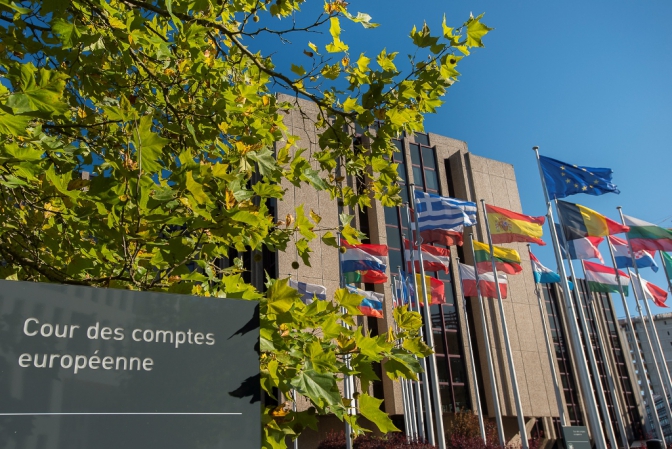There are major differences in the way the European Commission has incorporated EU’s policy priorities such as climate change, biodiversity preservation, gender equality, sustainable development and digital transition in the EU budget, according to a new report published by the European Court of Auditors (ECA) on Monday.
This is the first time that the auditors have reported on the EU’s horizontal policy priorities as a whole. They inspected a selection of 11 programmes that cover 90 % of payments made up to the end of 2021 under four headings of its multi-year budget. The five priorities are relevant for the EU’s current multi-year spending until 2027.
“The Commission should better incorporate the EU’s overarching policy priorities into its performance framework, in particular for gender equality, digital transition and United Nations’ Sustainable Development Goals (SDGs), while taking into account the cost and feasibility of its approach,” said François-Roger Cazala, the French ECA Member responsible for the report.
“It should also improve reporting on cross-cutting policy priorities to show how it makes the most of every euro spent, as well as better highlighting expenditure that contributes to several horizontal policy priorities at the same time.”
The auditors found significant differences between climate and biodiversity compared to gender. Although the five horizontal priorities were incorporated to different degrees into the EU’s spending programmes, the auditors found that the Commission had provided overly positive conclusions on progress made towards mainstreaming targets.
Climate and biodiversity priorities were mostly incorporated adequately. The UN Sustainable Development Goals and the digital transition had been partially incorporated. Gender, on the other hand, had been incorporated to a much lesser extent.
For climate and biodiversity, the Commission has developed methods to track spending across multiple programmes and has a framework in place to measure the EU budget’s contribution. However, its reporting is not accurate.
The Commission reports limited information on the contribution of EU programmes towards the Sustainable Development Goals and the digital transition, while the arrangements for measuring their contribution to gender equality have improved but continue to face limitations.
How do you explain the differences between the five horizontal priorities and the way they have been incorporated in the EU budget?
“The climate and biodiversity priorities are more directly included in sectoral legislation and the Commission’s impact assessments than gender, SDGs and digital,” ECA Member Cazala replied. “In particular, climate is a long-established policy priority with more developed objectives and budgetary targets.”
He added that the inter-institutional agreement between the Commission, the Parliament and the Council relating to the budget for the 2021-2027 period is more demanding for climate and biodiversity than for the other priorities, and does not mention digital at all.
How do you explain that the figures reported on spending on climate change and biodiversity are not reliable although the two priorities have been incorporated adequately?
“The first part on incorporation in the budget refers to how well they are covered by impact assessments, legislation and spending targets. Correctly reporting the actual budget spent on them is however a separate issue, and here we found problems.” This is because the Commission used approximations and other methodological flaws.
In July 2020, ECA published a special report showing that that the Commission overstated the contribution of the EU budget to climate action. In another report from June 2021, ECA observed that EU funding aimed at making its agriculture policy more climate-friendly had failed to reduce greenhouse gas emissions from farming.
According to ECA, the Commission accepted most of ECA’s recommendations on the first issue and has updated its climate tracking methodology very recently. It will also update its climate tracking methodology for the common agricultural policy in 2026.
You would expect that gender equality would be the easiest objective to incorporate and mainstream in the EU budget but not - why?
“The Commission still has to determine the extent of the impact many of its programmes have on gender. There is not yet a strong methodology for measuring gender related expenditure. It is less developed than the one for climate and it has developed few measurable goals and targets or reporting requirements.”
What are the shortcomings in the Commission's performance framework?
“The main shortcoming is that the framework, as it is designed, cannot measure the effect of expenditure reported as relevant to the horizontal priorities. The Commission has to work on developing its methodology to track gender relevant expenditure and to measure the budget’s contribution to the SDGs and digital transition.”
In the report, you consider current progress to be insufficient. Can we expect improvements in the Multi-Annual Financial Framework (MFF) for 2021-27?
“The Commission accepted our recommendations, and we will follow up this in a few years. The Commission’s updated methodology includes a shift towards ‘effect based’ expenditure tracking. Other example of improvement regarding gender equality is that the Commission is working on refining the methodology on integrating gender equality into the programming of the current programmes.”
M. Apelblat
The Brussels Times

